By Julia E. Moya, Maryland Environmental Service (MES)
May 13, 2025
Poplar Island: Restoring the Chesapeake Bay One Island at a Time
The trill of Red-winged Blackbirds, the screech of Common Terns, and the cheep of Osprey are only some of the incredible sounds of the wildlife flourishing on Poplar Island today.

The story of Poplar Island begins with loss but ends in beautiful triumph.
Once standing at 1,140 acres in 1847, Poplar Island (Poplar) was almost lost due to erosion. The residents of the small town of Valliant—populating the island in the early 1900s—established farms and a sawmill, which resulted in clearing away most of the trees and vegetation that were stabilizing the soil. This left the island vulnerable to erosion and Valliant residents were forced to abandon their homes by the 1920s.
By 1993, Poplar Island had eroded to less than 5 acres.
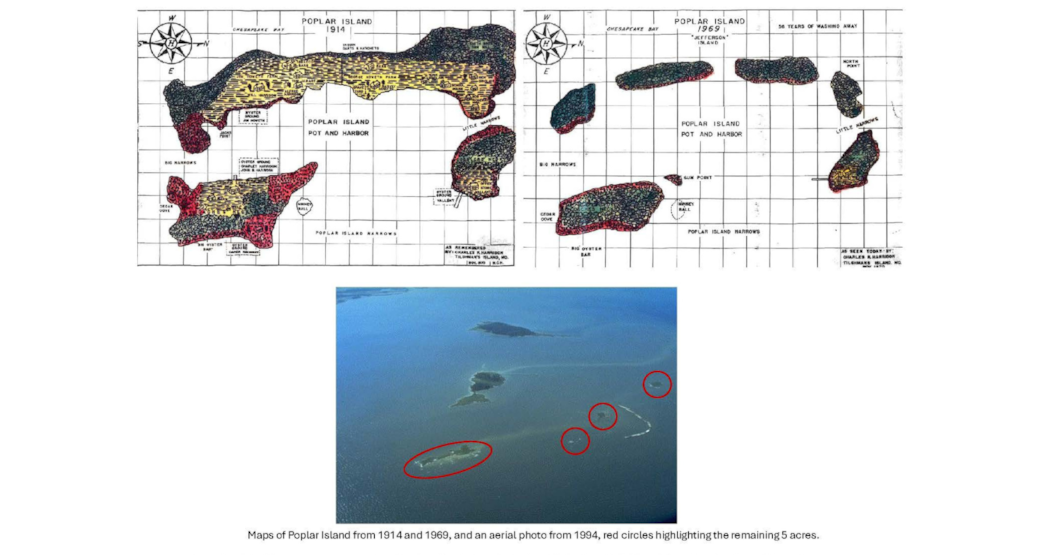
Inspired by the successes of restoring the island chain of Hart and Miller Islands—just northeast of Baltimore City—the U.S. Army Corps of Engineers and the Maryland Port Administration determined a solution involving the beneficial reuse of dredged material. The Chesapeake Bay averages a depth of 21 feet, and approximately 5 million cubic yards of sediment (dredged material) is removed from the bottom of the shipping channels each year to maintain a depth of 50 feet for cargo ships to get through to the Port of Baltimore (the Port). The Paul S. Sarbanes Ecosystem Restoration Project at Poplar Island was then established as a win-win solution for both Poplar and the Port.
Construction began in 1998, and the first shipment of dredged material was placed on the island in 2001.
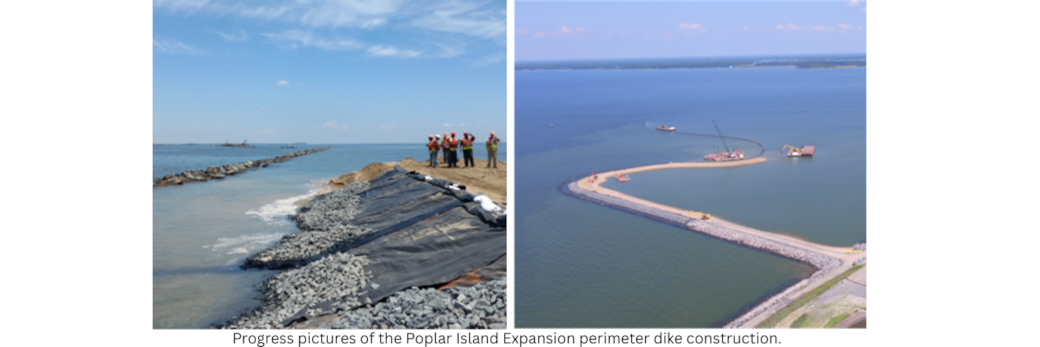
The dredged material is mechanically excavated using a large clamshell bucket, then placed in a scow, a type of flat bottom barge. The scow is then brought to Poplar with the help of a tugboat and is mixed with water to create a “slurry”; then hydraulically pumped to each of the island's confined subsections called “cells”.
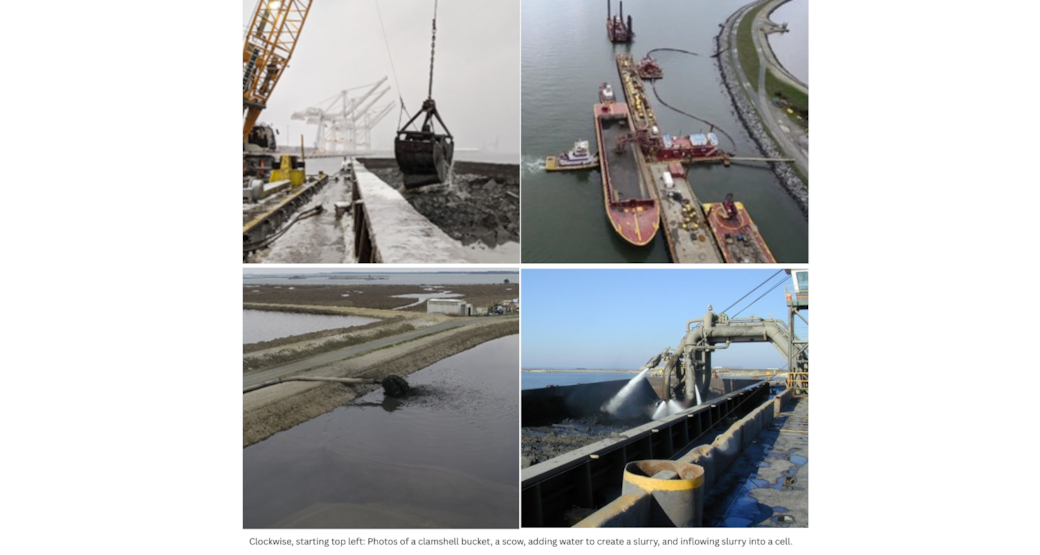
Over time, the sediment settles, and the overlying water is discharged. Once dry enough, construction begins and habitat features—such as wetland channels—are constructed. Planting native marsh grasses and shrubs by hand is the final step in the restoration process.
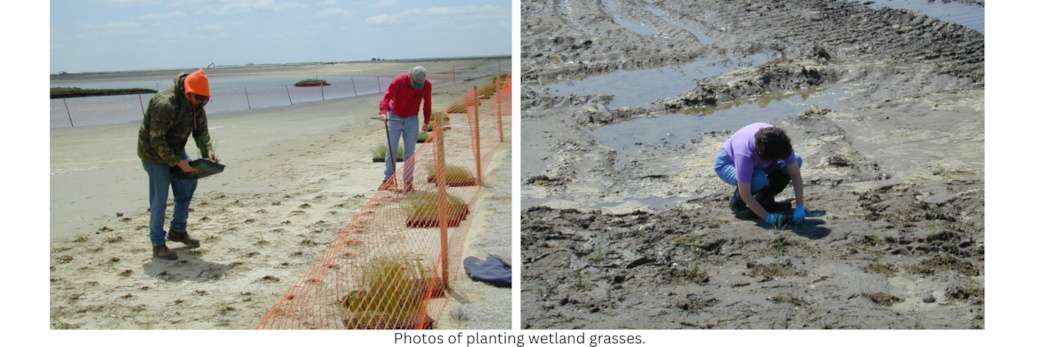
Today, Poplar stands at 1,715 acres—with over 770 acres of wetland habitat planned—and represents the incredible work that can be accomplished through establishing partnerships between groups of various interests and specialties, leading to continuous input and guidance throughout the project development. Projects like Poplar benefit both the economy by keeping our Port open, and the environment by rebuilding lost remote island habitat which serve as sanctuaries to wildlife (especially migratory species) and promotes the health of the Chesapeake Bay through the power of wetlands acting as natural filters to improve water quality. Now, anyone can visit Poplar and learn about its rich history, ongoing construction, and witness its evolution into completion, estimated for the 2040s.
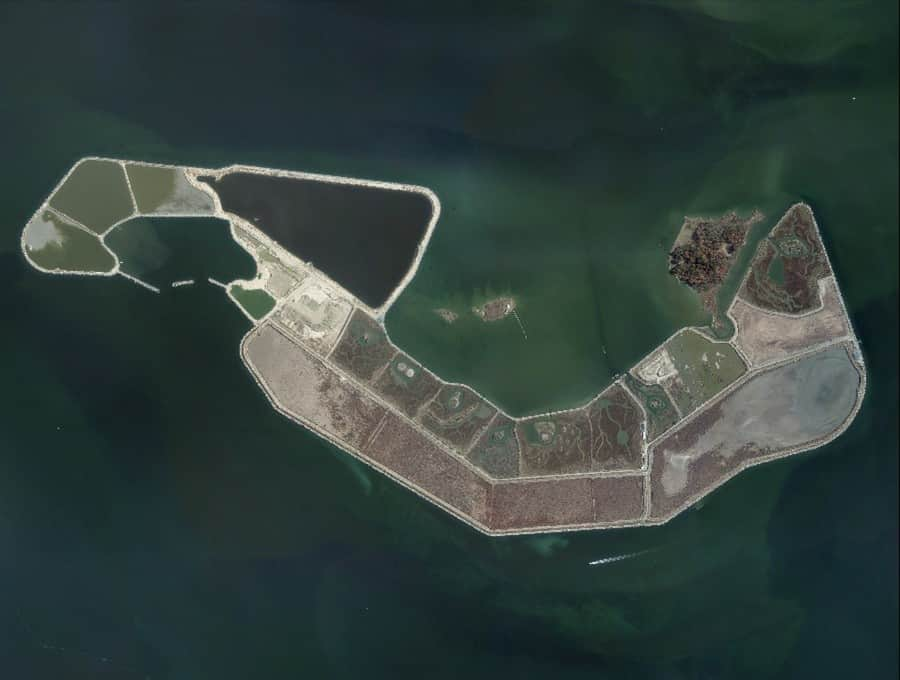
Up next is the Mid-Chesapeake Bay Island Ecosystem Restoration project, which will restore more than 2,000 acres of remote island habitat near what remains of James and Barren Islands in Dorchester County.
About the Author:
Julia Moya is an Environmental Outreach Specialist with the Maryland Environmental Service (MES), stationed at Poplar Island. Born and raised in New Jersey, Julia began her conservation career in elementary school when her love for Polar Bears and whales evolved into fundraising for the World Wildlife Fund and creating school presentations on global warming, wildlife trafficking, and the pollution of our oceans.
After graduating from Rutgers University with a bachelor’s in Biological Sciences and a minor in Marine Science, Julia dedicated herself to empowering adults and students in their knowledge and understanding of science and the environment, beginning with the creation of educational content on social media platforms covering topics from virus replication to mosquito habitat identification, wetland identification, and sea level rise.
Julia then became a Marylander in 2024 when she stepped into her role as a Chesapeake Conservation and Climate Corps (C4) member with the U.S. Fish and Wildlife Service Chesapeake Bay Field Office in Annapolis. During her time with the Service, she facilitated wildlife surveys on Poplar and enhanced her skills and knowledge in environmental outreach and education through projects at the Masonville Cove Environmental Education Center (Masonville) in Baltimore. Her experience on Poplar and coordinating with MES at Masonville propelled her into her current position on the island soon after completing the C4 program in August 2024. Julia now conducts tours of Poplar, leads educational programs and lectures about the ongoing restoration of the island, and authors the annual updates and working group meeting summaries that are published on the Poplar Island Restoration Project website.
Interested in learning more or scheduling a tour of the island? Please visit our website at http://www.poplarislandrestoration.com/
###
